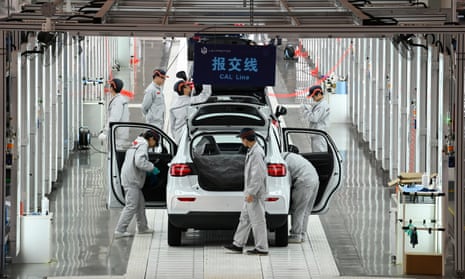Lithium prices have “gone ballistic” as surging electric vehicles sales worldwide create massive demand for the critical component of lithium-ion batteries.
According to figures from Benchmark Mineral Intelligence (BMI), the price of the lithium-rich raw material spodumene rose 478.3% between January 2021 and January 2022.
In January alone the price of spodumene jumped 45.5% to US$2,400 a tonne, up from $1,650 in December. Similar price rises were recorded for lithium carbonate and hydroxide – refined lithium at different stages of purity – over the past year.
BMI is forecasting the price will continue to increase for at least the next six month off the back of massive demand for battery cells.
In January the consulting firm McKinsey predicted the market for lithium batteries would grow to at least $360bn by 2030, with growth averaging 20% a year until the end of the decade.
But some analysts have sounded a note of caution as lithium pricing can be volatile – demand can grow quickly but new mines open and increase supply, dropping the price again.
Tim Buckley, an energy transition analyst and director of Clean Energy Finance, says demand for lithium is likely to remain high.
“It’s unsustainably high – it’s gone ballistic. It’s just brilliant to watch – the world’s transforming before our eyes,” Buckley said. “Nothing excites financial markets more than a 500% increase in prices.”
Buckley, an early investor in lithium, said while a range of factors were at play in creating the situation – including a labour shortage at key mine sites in Western Australia as a result of the pandemic and supply chain issues – it was surging demand for EVs in China that was the main driver.
He said this marked a “structural change” in the global economy and any future price correction would not be as severe as “cyclical” corrections in the past.
After slowing at the outset of the pandemic, electric vehicles sales have come roaring back in European and Chinese markets.
Although growth in the US has been slow, China alone recorded a 154% increase in the number of electric cars sold in 2021, with 3.3m in total.
China is also responsible for processing most of the world’s lithium, meaning a fall in prices may come as geopolitical tensions push countries to look for alternative supplies.
But Buckley said it will take time for these new sources to come online, while the global push to “electrify everything” and reach net zero by 2050 meant demand would stay high.
Opportunities for Australia
He said the situation represents an opportunity for Australia, whose key exports – iron, coking coal, liquefied natural gas and thermal coal – are heavily exposed to decarbonisation efforts.
In a sign of where things are going, French steel giant ArcelorMittal and German steel company Salzgitter AG in the last fortnight separately announced billions of dollars in new investment in electrifying their operations
Australia stands to gain by supplying lithium for the production of electric vehicles, although it faces competition from the “lithium triangle” of Bolivia, Chile and Argentina.
Processing this material to varying degrees of purity close to its source may offer a chance for Australia to edge out its competitors, with some companies already heading in that direction
In 2019 Wesfarmers sold its three coal mines and sunk new investment into the Mt Holland lithium mine and Kwinana refinery in WA.
There was a setback for Rio Tinto when the Serbian government revoked its licence to develop the Jadar lithium mine after protests and a diplomatic stoush with the Australian government. But Buckley said the trend – and the opportunity – is clear.
“The value of lithium companies listed on the ASX is multiples of the coal sector. If we can be not just a quarry to China, Japan and Korea, and do value-adding, that is a huge structural shift,” Buckley said.
“If you just leave Gina and Twiggy to dig up the minerals without value adding, Australia is going to be worse off.”
